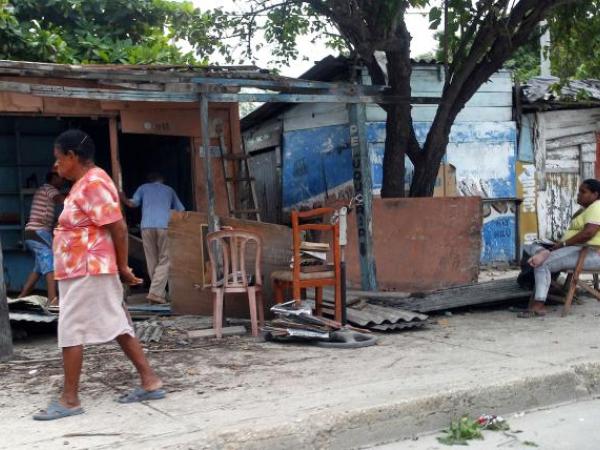After three months in whichl Dane did not publish the figures of the Social Pulse survey, Yesterday the statistical entity presented the bulletin again, with the information corresponding to January, February and March 2023.
(See: Multidimensional poverty in Colombia closed 2022 at 12.9%).
Among the main results of the survey, the food security situation of Colombians is highlighted. According to the bulletin, at the end of the first quarter there were 2.35 million households in the country that did not manage to complete three rations of food a day.
According to the eofficial statistics, out of a total of 8.5 million households, only 6.15 million complete the three daily meals, that is, only 72.4% of the families. Another significant group, 26.5% of households (2.2 million) eat only twice, while there are 92,857 families that live with only one meal (1.1%) and even 1,820 households do not have a way to supply a plate. up to date.
According to the Dane, compared to the month of March 2022, that is, a year ago, the proportion of households consuming only two servings increased, which went from 24.9% of families in the country to 26.5%.
By contrast, the percentage of households that only eat one meal fell per day in Colombia, which went from 1.2% to 1.1%, and also that of families that consume the three servings, with a difference between 73.8% and 72.4%.
(See: Petro says that the minimum wage has grown 4 real points).
Poverty in Colombia.
The entity also showed that 49.6% of citizens consider themselves poorand that when inquiring about the economic situation of their homes compared to a year ago, 50.8% said that they feel it is worse or much worse, while 42.3% feel that it is the same and only 6.9% believe that it is better or much better.
It is also worth noting that 75.4% of the citizens surveyed for the main 23 cities and metropolitan areas of the country, just over 9.7 million, do not have a way to save part of their income to save.
By contrast, only 13%, that is, 1.6 million, have the capacity to save, while 11%, another 1.4 million people, do not even earn income.
And when inquiring about the economic possibilities of families to access basic goods such as clothing, shoes or food, only 4.1% of the heads of household say that they have better possibilities than a year ago. This is 529,617 people.
(See: Labor reform could slow down poverty reduction).
For 65.8% of Colombians (8.4 million), on the contrary, the possibilities are less, and 30.1% of the surveyed population, 3.8 million people, feel that their situation has not worsened, but neither improved.
Likewise, in the future, a marked pessimism remains, with 50.0% of the heads of household with a negative expectation for the economic situation of the country.
With all this, the Dane highlighted that the Consumer Confidence Indicator (ICC) remained at a very similar level during the first quarter of the year. For March it was at 33.97 points, while in February it was at 33.74 and in January at 31.06.
Despite this relative stability, it is worth remembering that, according to the Dane’s criteria, all levels below 50 are representative for a perception of pessimism, while indicators above this range show a spectrum of optimism.
(See: 70% of Colombians are poor, do not have decent work or education).
LAURA LUCIA BECERRA ELEJALDE
Journalist Portfolio








![[Img #74675]](https://thelatestnews.world/wp-content/uploads/2024/12/They-discover-a-new-class-of-X-ray-sources-in-the-150x150.jpg)



